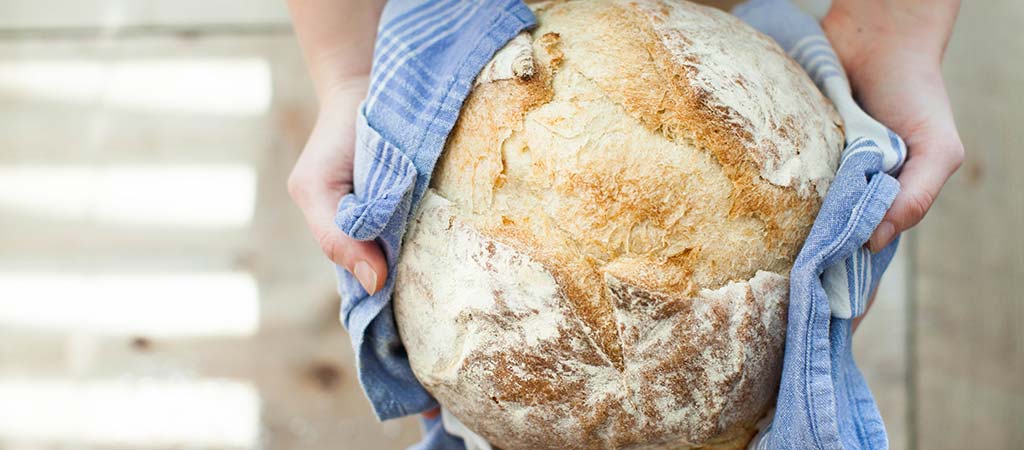Last week was Bread Week on The Great British Bake Off, which means a lot of you will be dusting down your kitchens to have a crack at bread-making for yourself. Before you do, have a read of these knead-to-know bread-making skills that will take you from a soggy bottom to Star Baker status.
Kneading
The whole point of kneading is to develop long, flexible strands of gluten in the dough. While pushing it around a worktop does the trick, you can get much better results by holding the dough at one end and use a whipping motion to stretch it out and slam it on the counter. Then, fold it in half lengthwise, grasp at the other end, and repeat. Just make sure you don’t fling it onto the floor, as Cathryn did in series three of Bake Off.
Get steamy
The secret to a thick, crispy crust lies in moisture. If you can create steam in the oven at the start of your bake, it will cling to the outside of the dough and protect it while the inside cooks resulting in a perfect crust. Some ovens have a steam setting that does this for you – if not, you can create the same effect by preheating a baking tray in the bottom and half-filling it with cold water (or ice) when the dough goes in to bake.
Stone cold hot
A stone bake oven is the perfect environment for baking bread, but it’s not the piece of kit you tend to find knocking around in the average kitchen. Luckily, there are a couple of ways to recreate the effect. The first is using a pizza stone, preheated in the oven to hold its heat. When your dough is ready to bake, simply dust it with flour and pop the dough on top. If you don’t have a stone, a cast iron ovenproof casserole dish with a lid works just as well and saves you the job of adding steam to the oven. Simply preheat the pot, add your dough and pop the lid on for the duration of the bake.
Stop sticking around
Working your dough is sticky business, and it’s hard to resist the temptation to add a generous dusting of flour to your hands and surface to bring it all together. But this is risky – add too much and you’ll upset your ratios, leading to a dense loaf. Instead, rub a little oil (olive, sunflower, or vegetable all work fine) into your hands and worktop to stop the dough from sticking without adding anything to it.
Look through the window
It’s tricky to know whether or not your dough has been kneaded enough and is ready to prove, but there’s one foolproof way to tell. Stretch a piece of it between your fingers – if the dough can stretch enough to become semi-translucent without breaking, then you’ve developed long and strong strands of gluten that will lead to a great loaf. It’s called the ‘windowpane’ test, and you’ve probably spotted a few bakers doing it on the show.
